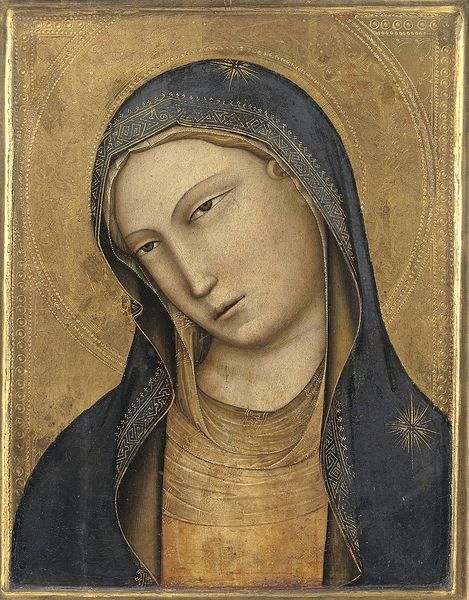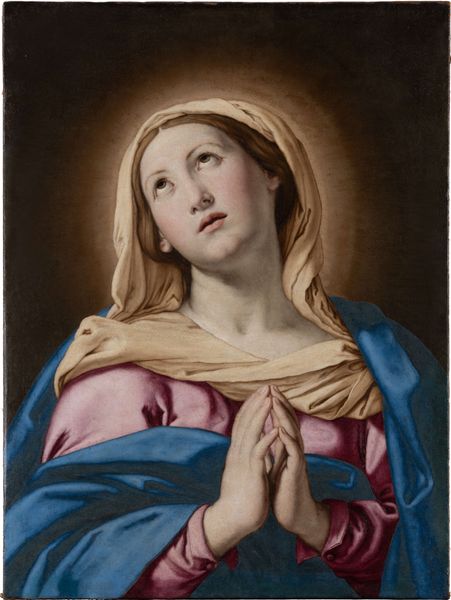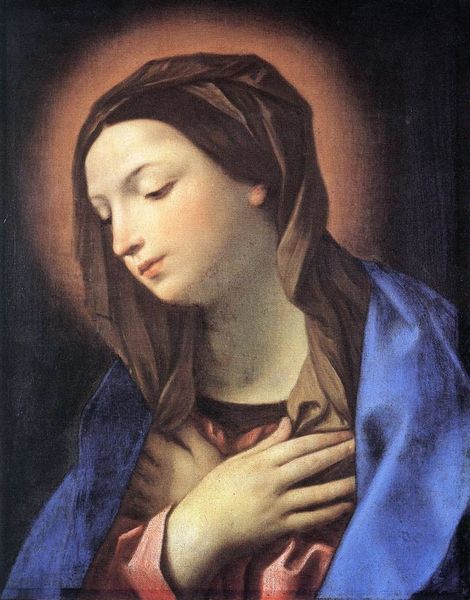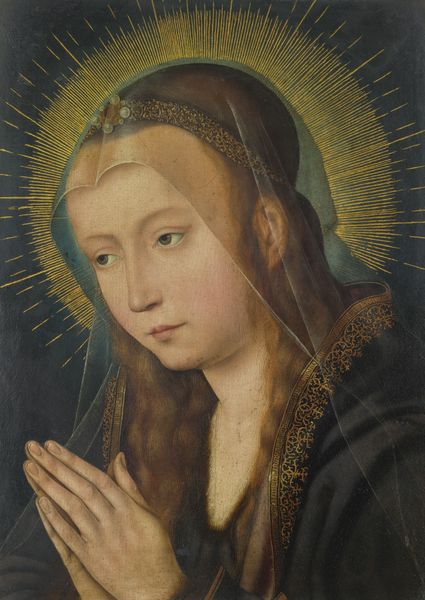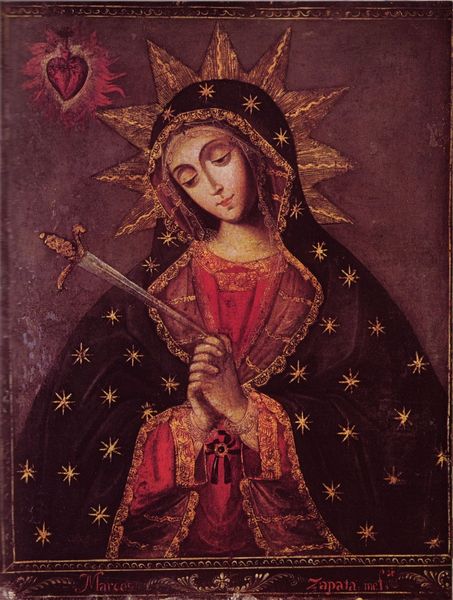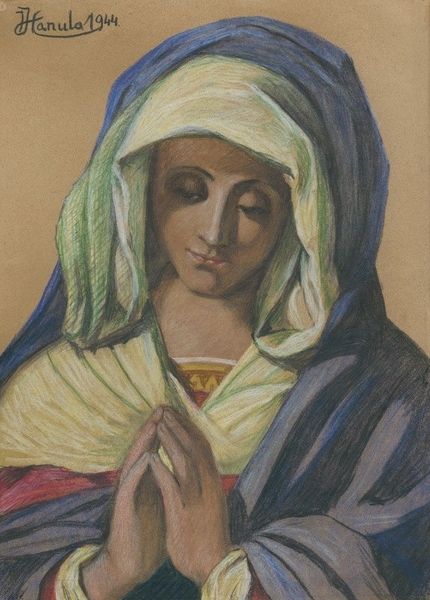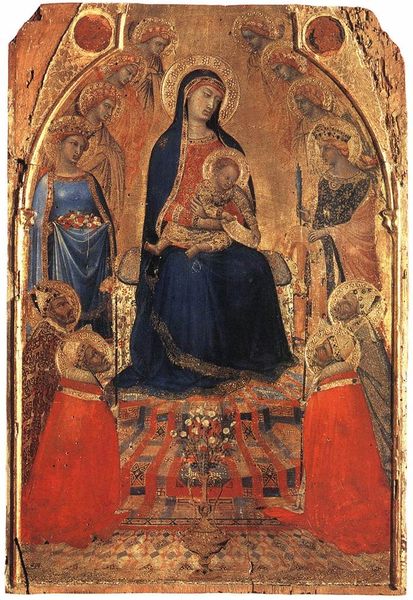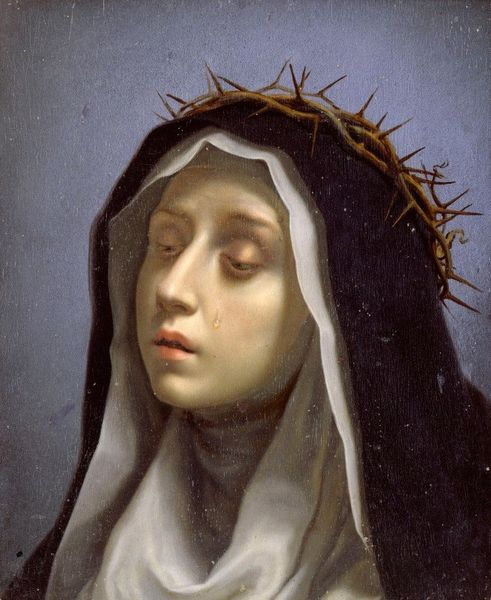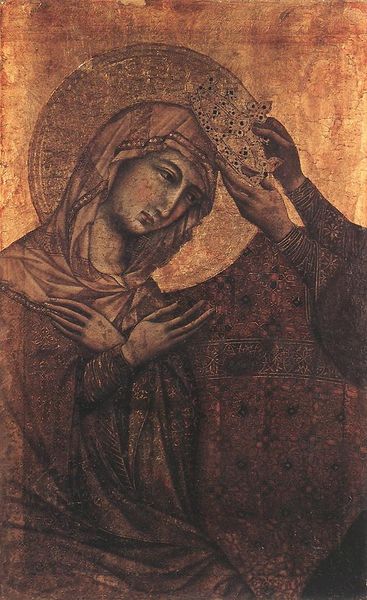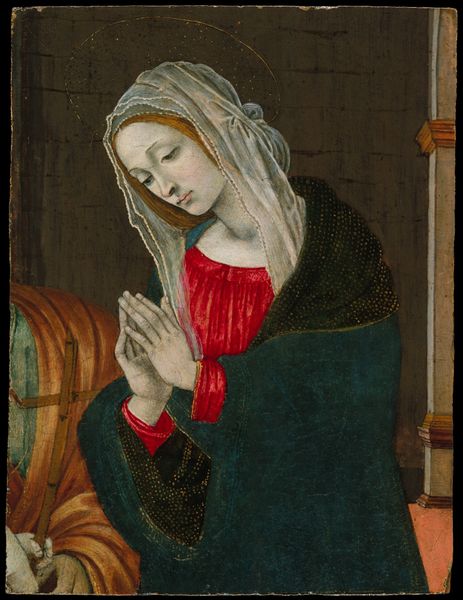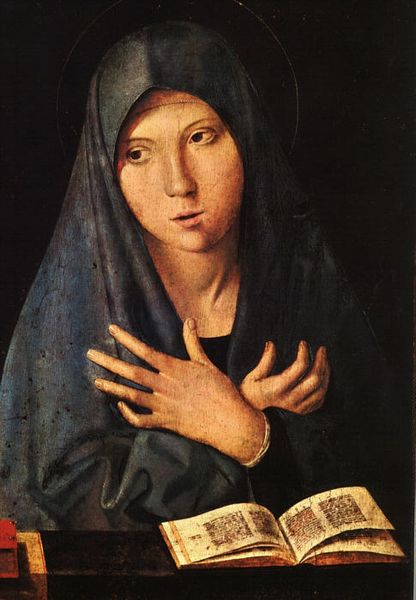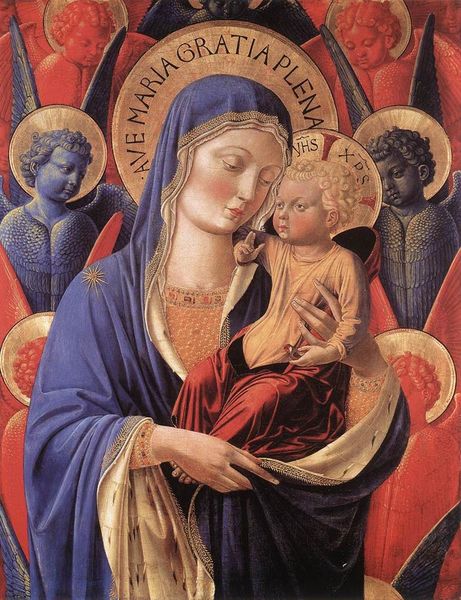
Dimensions: 14 1/4 × 11 1/2 in. (36.2 × 29.2 cm)
Copyright: Public Domain
Pietro Ferloni created this woven silk tapestry, "Bust of the Virgin," sometime in the mid-18th century. During this time, the Catholic Church’s influence was still very powerful, shaping artistic production, particularly in Italy where Ferloni was based. The image of the Virgin Mary, with her head tilted down and hands clasped in prayer, is a recognizable symbol of piety and humility, central to the role women were expected to play in society. Ferloni captures Mary's emotional state, presenting her in a moment of contemplation or sorrow, evoking both reverence and empathy. The medium itself—tapestry—adds another layer to the work. It’s a textile art form often associated with domesticity and female labor. By choosing tapestry to depict the Virgin Mary, Ferloni could be subtly commenting on the significance of women's roles within both the church and the home. This piece invites us to reflect on the complex intersections of religion, gender, and artistic expression in 18th-century Europe.
Comments
No comments
Be the first to comment and join the conversation on the ultimate creative platform.


